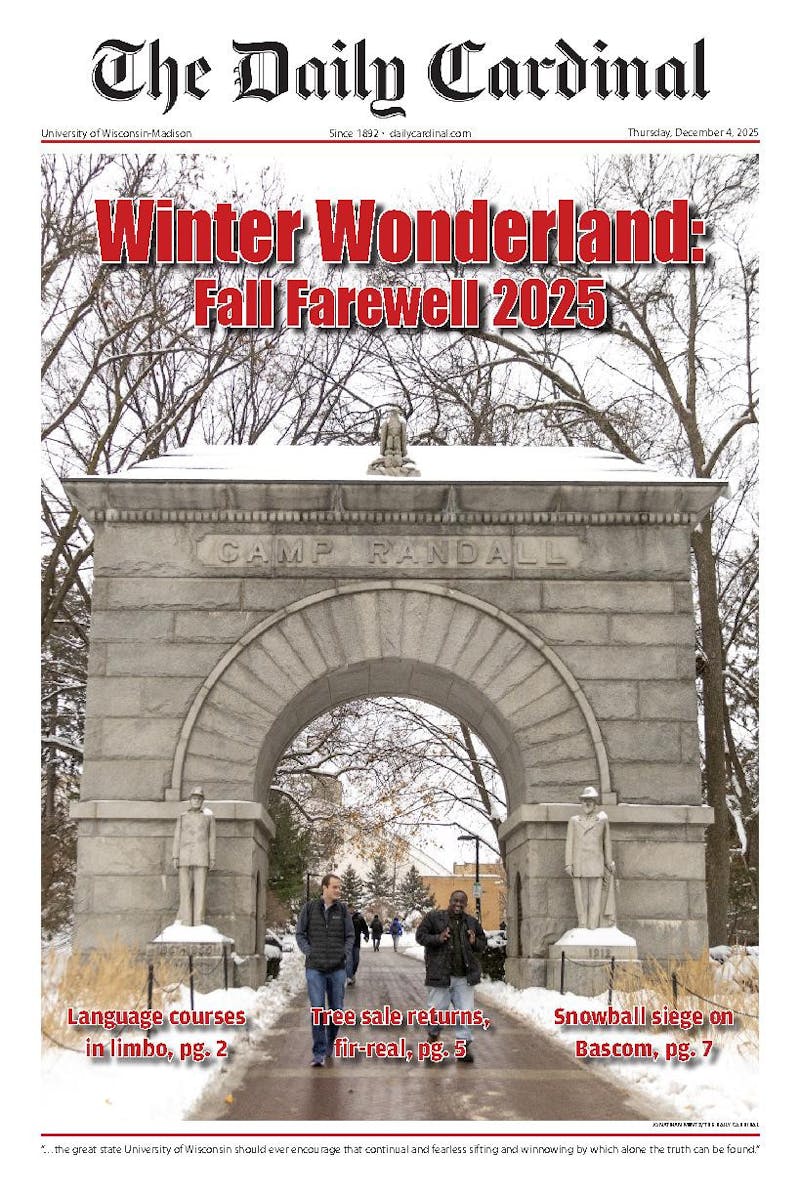In Ireland, it has long been considered a sign of respect to serve guests warm, freshly baked bread. Irish soda bread, a traditional staple of the Irish diet since the beginning of the 1900s, is the bread Ireland is most famous for. In honor of St. Patrick's Day, it is time to pay respect to the Irish and learn a little more about this unique, tasty bread.
Soda bread was traditionally baked using flour, soured milk, baking soda and salt. UW-Madison senior Brian O'Gara, who has visited Ireland with his family to learn more about his Irish ancestry, is very familiar with soda bread. He explains that the recipe was born out of necessity: During the 1900s, the strong flour needed for yeast to leaven bread properly was very scarce. It was then discovered that baking soda also functioned as a leavening agent, and soda bread was born.
The combination of soured milk, often replaced with buttermilk today, and bicarbonate of soda generates carbon dioxide while the bread is cooking and causes it to rise. Not having to wait for yeast allows the bread to be prepared quickly. However, it spoils quickly as well. This accounts for why most families baked it almost every day.
Traditionally, the bread was baked next to or over an open fire in a cast iron pot known as a bastible. In some areas, the bread, which can be prepared with either white or wheat flour, was even referred to as \bastible bread."" A modern-day bastible can be simulated today by putting two pots together and cooking the bread inside them in the oven.
Many other more modern cooking methods have evolved as well, along with variations in the traditional recipe. Current methods of preparation include both pan-fried and baked bread and the addition of ingredients such as margarine, cinnamon, sugar and toppings including raisins or nuts.
No matter the recipe, soda bread's crunchy crust, thick and chewy interior and blend of buttermilk and baking soda combine to create a unique taste that O'Gara describes as ""buttery and sweet."" He is sampled the bread in both his own kitchen and in Ireland, and especially enjoys it with raisins baked in, as pictured. This variation of the recipe is sometimes referred to as ""spotted dog.""
Though far from Ireland, Madison is lucky to be home to bakeries that shelve fresh soda bread. Stella's Bakery, 2908 Syene Rd., describes its version of soda bread as having a ""rich, scone taste.""
It is also sold at Willy Street Co-op, 1221 Williamson St. Many vendors at the summer farmers market offer it as well.
There is some discrepancy as to why the bread is traditionally prepared with a large cross diagonally across its center. According to www.foodreference.com, Irish legend says the cross is a religious symbol to ward off the devil. Other references, such as the Ballymaloe Bread Book, say its purpose is to let fairies out of the bread to ensure it isn't jinxed. On a more practical note, the slashes also allow the bread to cook evenly and provide an easy way to divide it later on.
With today's methods of cooking, the recipe for soda bread is almost foolproof and is a great way for a beginner to practice baking bread. This ""quick bread"" is most often served with butter, but many enjoy it with jam or jelly as well. Bake it today in honor of St. Patrick's Day and discover the secret that the Irish have known for decades. Follow the recipe in its traditional form, or feel free to come up with your own version as well.
Irish Soda Bread
3 1/2 cups all-purpose flour
1 tsp. baking soda
1 tsp. salt
1 1/2 cups buttermilk
First, preheat the oven to 425 degrees and lightly grease and flour a baking sheet. In a large bowl, mix flour, baking soda and salt, then buttermilk to form dough into ball. Put onto lightly floured surface and knead for about a minute until the dough holds together. Shape dough into a 6-inch round, then place on a prepared baking sheet. Cut 1-inch deep ""X"" across the top of the bread, reaching almost to the edges. Bake for about 40 minutes until bread is golden brown and sounds hollow when tapped on bottom.
-Recipe provided by irishcultureandcustoms.com





